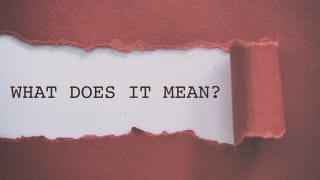Richard Florida: On Trump and Cities
The election of Donald Trump has wide-ranging implications for America’s big cities and their place in the nation and the global economy. A new book by city expert Richard Florida, The New Urban Crisis, explores the forces that propelled Trump to the presidency, and offers plenty of analysis about what’s in store for large urban centres around the globe.
You mention in your new book, The New Urban Crisis, that Trumpism is a backlash against an urban-powered growth model. How so?
I saw it first with Rob Ford in Toronto and I said if it could happen in as progressive and diverse a city as that, more and worse would follow. And it did. First Brexit, then Trump, now the surge in populist sentiment across Europe. This is a direct byproduct of the New Urban Crisis. In fact, you can’t understand Trump and the populist backlash if you don’t understand the New Urban Crisis. That backlash is the political reaction to winner-take-all urbanism—the growing gap between superstar cities and their advantaged residents, and everywhere and everyone else.
How did that work in U.S. voting patterns in November?
You can see it in the vote, which the book breaks down. Clinton took the dense, affluent, knowledge-based cities and close-in suburbs that are the epicentres of new economy. She won the popular vote by a substantial margin. But Trump took everywhere else. In the primaries, his support was concentrated in counties with larger white populations, more blue-collar jobs, larger shares of people who didn’t graduate high school, and also, according to an analysis in The New York Times, with greater shares of people living in mobile homes. In the general election, he took 61% of the vote in rural places compared to 33% for Clinton. He won 57% of the vote in metros with less than 250,000 people, compared to 38% for Clinton. He carried 52% of the vote in metros with between 250,000 and 500,000 people, compared to 34% for Clinton. All told, he won 260 metros, compared to Clinton’s 120. But the average Trump metro was home to just 420,000 people compared to 1.4 million for Clinton.
Why do some Trump supporters see our major cities as centres of corruption and violence?
While Trump poses our great cities as centers of pathology and violence, the reality is that they have become our premier platform for innovation and economic growth. Fifteen of America’s top 20 metro areas are sanctuary cities—and they account for roughly 45% of U.S. GDP. The Bay Area, Greater Los Angeles and the Boston-NY-Washington DC corridor generate two-thirds of all high-tech start-up companies in the United States. Trumpism or populism is not just about economics or inequality. It’s about geography and race. It’s a backlash against women, immigrants, minorities, globalism, and it’s a fundamental check on this urban-powered growth model and on the rising living standards of all Americans.
So Trump is a backlash against falling behind by non-city residents?
Our nation has sorted itself along class and racial lines. Trumpism is a backlash against the urban cosmopolitan creative class and its values of diversity, tolerance, multiculturalism, meritocracy and globalism. It comes from parts of the country that are falling behind economically, that are whiter, less diverse, and which feel threatened by the rise of diverse, global urban places and the people who live in them. And this is the case in the U.S. and around the world. So, the populist mind sets sees cities not as centres of innovation and growth but as the places that are undermining traditional family values. Trump gives this a unique spin. Even though he lives in New York, he is unable to see the changes that have happened there. He still sees it as the same kind of distressed city it was back in the 1970s and 1980s when he was cavorting at Studio 54.









